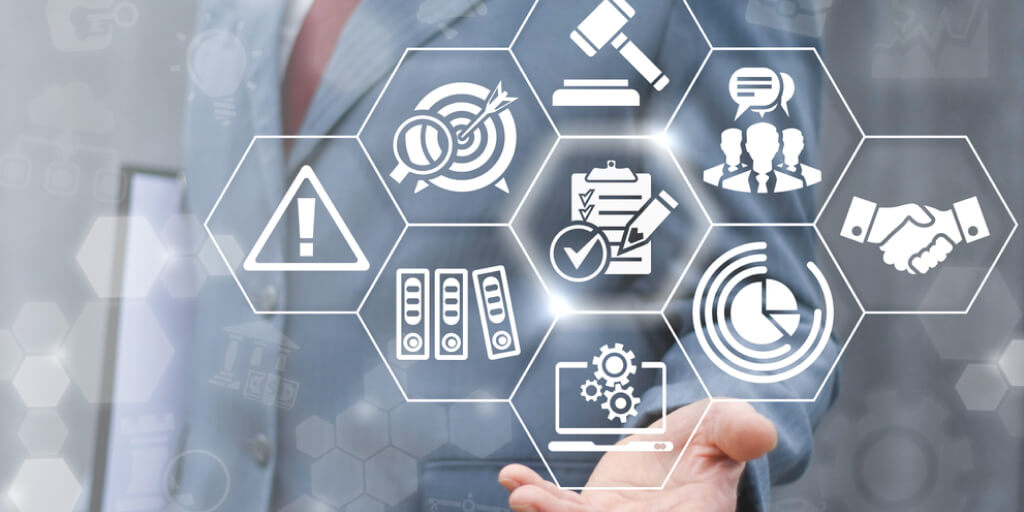Table of Contents
- Introduction to GaaS
- Benefits of Adopting GaaS
- Use Cases Demonstrating GaaS Impact
- Key Challenges to GaaS Adoption
- Best Practices for Implementation
- Call to Action
- Conclusion
Introduction to GaaS
Government as a Service (GaaS) refers to a cloud-based model for delivering digital government services through third-party providers rather than building and maintaining localized infrastructure. Inspired by popular as a Service models like SaaS, GaaS leverages the scalability and flexibility of the cloud to transform public sector operations.
According to ResearchAndMarkets.com, the global GaaS market size is projected to reach $51.5 billion by 2028, growing at a 19.7% CAGR as government agencies increasingly recognize the benefits. Forward-thinking cities and states have already begun transitioning select functions to GaaS to drive digital transformation.
The aim of adopting GaaS includes:
- Achieve operational efficiency
- Reduce costs
- Improve citizen experience
- Enhance cybersecurity posture
As more public sector organizations follow suit, they can prepare for substantial impacts. This article delves into the valuable outcomes, use cases, challenges, and best practices to be aware of.
Benefits of Adopting GaaS
Implementing GaaS as part of digital transformation initiatives allows government agencies to take advantage of cloud capabilities while focusing on serving citizens. The approach alleviates the burden of localized infrastructure demands in favor of consumption-based models. Some of the most compelling benefits are increased efficiency, cost savings, improved experiences, and enhanced security.
1. Increased Efficiency and Cost Savings

GaaS drives operational efficiency by consolidating redundant tools, systems, and efforts to strategically leverage the cloud. It eliminates the resource-intensive management of individual servers, databases, and hardware in favor of smooth, maintained services. With easier administration powered by automation, personnel can divert their attention to high-value tasks that more effectively serve communities.
These efficiency gains translate directly into substantial cost reductions. A Deloitte Insights report indicated that shifting to an as a Service approach could yield 20% to 50% cost savings for government organizations through:
- Reduced capital expenditures
- Software license expense elimination
- Lesser IT support needs
- Decreased development overhead
- Prevented system maintenance and operations
With budgets stretched thin across cities and states, the cost savings possibilities through GaaS adoption are extremely valuable.
2. Improved Citizen Experiences

At their best, digital government services powered by cloud technology can provide consumer-grade experiences for all citizens interacting online. GaaS enables a transition away from disjointed offline processes by consolidating resources to create unified solutions accessible whenever and wherever needed.
Key citizen experience improvements include:
Omnichannel access: Citizens can submit information, make payments, and fulfill services through websites, mobile apps, call centers, kiosks, digital assistants, and other touchpoints with support integrated in the backend.
- Personalization: Cloud architecture better enables agencies to collect comprehensive data before tailoring services to individuals based on preferences and history.
- Proactive assistance: With integrated systems, governments can foresee citizen needs or gaps in service before user frustration builds.
With 64% of US citizens indicating satisfaction improvement as a top priority for government technology investments, the ability for GaaS to elevate experiences recoups value.
3. Enhanced Cybersecurity

Migrating public sector systems to the cloud via GaaS also paves the way for improved cybersecurity through regular updates, dedicated security protocols, and reduced vulnerabilities. Rather than relying on legacy environments to protect sensitive data, governments gain expert support in detecting and responding to growing threats in the digital landscape.
ResearchAndMarkets.com indicated:
Cybersecurity solutions are expected to be the fastest-growing GaaS solution over the forecast period with a projected CAGR of over 25%.
The cybersecurity expertise and oversight gained by adopting GaaS should provide assurance that citizen data is better protected when accessed online. With data breaches projected to cost $6 trillion globally by 2021, securing public sector systems is non-negotiable.
Use Cases Demonstrating GaaS Impact
Though still an emerging approach, Government as a Service has already been implemented by forward-thinking locations to enhance operations. Here are two impactful examples:
The state of Ohio adopted a GaaS model for streamlining IT management across state agencies and boards. Their Ohio One Network features a master service agreement with centralized procurement for cost optimization and shared infrastructure services that resulted in:
25% to 50% project cost reductions
- 40% quicker timelines for network-enabled business solutions
Kansas City, Missouri took a localized approach to GaaS by building a dedicated startup called KCQ Digital focused solely on their government needs. It offers municipal divisions:
- Reduced contractor spend by 60%
- Only pay for services as consumed rather than through lump sums
- Quicker builds with operation software expertise
These examples demonstrate the potential that Government as a Service has today to resolve pressing pain points when strategically embraced.
Key Challenges to GaaS Adoption

Of course, revamping public sector technology models does not come without difficulties. Government agencies looking to maximize GaaS benefits should prepare for two primary challenges:
1. Resistance to Change
Perhaps the most significant roadblock involves overcoming organizational resistance to cloud adoption. Maintaining the status quo feels safer, so stakeholders across hierarchies often push back on transformational concepts. But emphasizing efficiency and monetary gains, especially in the midst of budget deficits, helps overcome reluctance.
It also helps to highlight cybersecurity and constituent benefits since most care about digital protections and community impacts first and foremost. With strong leadership backing GaaS transitions, public sector workforces are more likely to recognize the favorable tradeoffs.
2. Integration with Legacy Systems
Typical government entities rely on a vast patchwork of legacy line-of-business systems built up piecemeal over decades. Moving completely away from those foundations in favor of cloud-based GaaS alternatives all at once is implausible. So the question becomes how to intelligently integrate modern solutions with existing tools.
The Kubernetes container orchestration platform has become indispensable for transitioning legacy applications to the cloud. According to Red Hat:
“Kubernetes serves as the universal control plane necessary to deploy, automate operations, and manage new cloud-native applications alongside the traditional systems being modernized.”
With Kubernetes facilitating the connection of old and new tech stacks, government agencies can bridge towards service-oriented delivery at the appropriate pace.
Best Practices for Implementation

Government entities equipped to handle the aforementioned challenges can then move forward with executing well-planned migrations to GaaS models. Those ready to embrace transformations should consider several best practices as guidance:
- Start small then expand: Prove value with a pilot use case first before attempting full-scale organizational change. Target applications well-suited for cloud hosting rather than the most complex legacy systems.
- Invest in integration platforms: Tools like Kubernetes, containerization, microservices, APIs, and event streaming enable connecting new GaaS solutions to legacy systems in a loosely coupled fashion. Build competency in these areas.
- Work with GaaS solution experts: Rather than taking an entirely DIY approach, leverage vendors like Accenture or HCL Technologies who provide cloud-centered offerings catered to public sector agencies with security and compliance baked in. Their experience smooths journeys.
- Maintain talent mobility: Ensure personnel embraces continued learning and reskilling as responsibilities shift between outdated and cloud-based systems. Support staff through uncertainty.
Making strides towards digitally-driven service delivery models furnishes governments and citizens with modernized experiences and secure foundations for the future. Following proven approaches accelerates successful adoption.
Call to Action

Governments worldwide should embrace the GaaS paradigm to modernize and optimize service delivery. Stakeholders, including policymakers, technology providers, and citizens, must collaborate to drive the adoption of GaaS and ensure its success.
Key actions to take:
- Advocate for GaaS adoption in policy discussions.
- Collaborate with technology partners to implement GaaS solutions.
- Provide feedback to governments on improving digital services.
The Role of Blue Whale Apps in GaaS
We take pride in our pivotal role in advancing Government as a Service (GaaS) initiatives, contributing to the digital transformation of government service delivery. Our commitment to innovation and user-centric design positions us as a leading force in enhancing citizen engagement and streamlining services through cutting-edge solutions.
How Blue Whale Apps contributes to GaaS:
- Application Development: We specialize in developing intuitive and user-friendly applications, exemplified by the Blue Whale App. Our applications serve as centralized hubs, providing citizens with seamless access to a diverse range of government services.
- Integration Expertise: Our team excels in seamlessly integrating our applications with existing government systems. This expertise ensures efficient real-time data exchange, promoting accuracy and transparency in all transactions.
Conclusion
In conclusion, Government as a Service represents a paradigm shift in public sector service delivery. The integration of digital platforms, data-driven decision-making, and citizen-centric services is reshaping the way governments interact with their constituents. By addressing challenges and embracing the opportunities presented by GaaS, governments can build more responsive, efficient, and citizen-friendly administrations.






